Weekly World Numismatic News for April 3, 2022
 The love of a dog can never be measured. When you bring one into your home and heart, the bond is instantaneous and enduring. Bring in two, and it is a house full of barking, messes, love, and affection. My wife and I raised two puppies, a brother, and a sister, from different litters.
The love of a dog can never be measured. When you bring one into your home and heart, the bond is instantaneous and enduring. Bring in two, and it is a house full of barking, messes, love, and affection. My wife and I raised two puppies, a brother, and a sister, from different litters.
When the youngest has been with you for 13 years and 7 months, it may be a long time, but it feels like yesterday. We raised Tessa from a puppy from the day we picked her up in November 2008.
We used to say that if Tessa was human, she’d be a party girl. Tessa was a fun-loving dog who was very intelligent but would rather play. She did not have a short attention span, but it was short when she was not playing.
Aside from annoying her (late) brother, Boomer, Tessa’s favorite pastime was eviscerating toys. Any stuffed toy would not last more than a few moments, and she would attack, and the stuffing would be all over the house. If the toy had a squeaker, Tessa would chew it until it stopped squeaking.
Tessa slowed down a lot over the last two years, and age was catching up with her. Amongst her ailments, Tessa had arthritis in her hips. We bought a doggie stroller to bring her around the neighborhood. Since I had some time off on Monday, Tessa and I went for a long walk. The image on this post is from that walk. It was the last time we had quality time together.
On Saturday, Tessa went into respiratory failure, and we rushed her to the veterinary hospital. For a while, it seemed that she was stable and could get better, but she took a turn for the worse. We had no choice but to help her end this journey and lead her on to her next journey across the Rainbow Bridge.
I hope Tessa finds her brother Boomer, and they are running around like they did so many years ago. Sweet dreams, my baby-baby sweetheart. You will be missed.
And now the news…
 → Read more at gizmodo.com
→ Read more at gizmodo.com
 → Read more at usatoday.com
→ Read more at usatoday.com
 → Read more at nbc4i.com
→ Read more at nbc4i.com
 → Read more at the-sun.com
→ Read more at the-sun.com
 → Read more at livescience.com
→ Read more at livescience.com
Your change ain’t changing
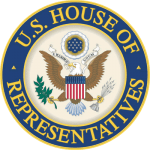 This week, the House of Representatives suspended their rules to pass H.R. 7995, Coin Metal Modification Authorization and Cost Savings Act of 2020. While the bill appears to have good intentions, it is largely a do-nothing measure for a do-nothing Congress.
This week, the House of Representatives suspended their rules to pass H.R. 7995, Coin Metal Modification Authorization and Cost Savings Act of 2020. While the bill appears to have good intentions, it is largely a do-nothing measure for a do-nothing Congress.
Despite the problems with the bill, Congress has a way of changing the definition of “commonsense” when they think it makes them look good. According to the Congressional Record, Rep. Lacy Clay (D-MO) reportedly said:
Although the bill may appear to make “commonsense,” the bill ignores previous investigations conducted by the U.S. Mint, indicating this is a waste of time.
The primary problem is that the bill ignores that Congress passed a law in December 2010 (Public Law 111-302, 124 STAT. 3272) that requires the U.S. Mint to research alternative metals and provide a report every two years. Since Congress passed the law, the U.S. Mint issued four reports to Congress, with the last delivered in April 2019.
The law requires the U.S. Mint to investigate alternative metals that save production costs and minimizes changes to the financial infrastructure. Minimizing the changes requires “that the coins will work interchangeably in most coin acceptors using electromagnetic signature technology.”
An electromagnetic signature refers to the pattern the waves of energy create when are reflected from an object. In coin-operated machines, it refers to the waves of energy emitted from a coin when it passes through the mechanisms. Every coin the U.S. Mint strikes have a specific signature to verify that item you inserted in the slot is real. The people you are paying do not want you to use slugs or similar foreign coins.
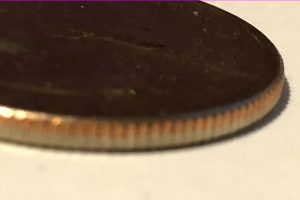 In 1964, when the silver cost made the coins worth more than their face value, policymakers required the U.S. Mint to change the coinage metals with the same goals. For the coin-op systems, they were more concerned with the electromagnetic signature than the weight. Given the state of their technology in 1964, they could adjust the machines to accept coins with the new weights as long as the electromagnetic signatures were consistent.
In 1964, when the silver cost made the coins worth more than their face value, policymakers required the U.S. Mint to change the coinage metals with the same goals. For the coin-op systems, they were more concerned with the electromagnetic signature than the weight. Given the state of their technology in 1964, they could adjust the machines to accept coins with the new weights as long as the electromagnetic signatures were consistent.
Early tests showed that the copper-nickel clad coins circulating today were a close match to their silver counterparts’ electromagnetic signatures and weighed a little less. It would be easy to adjust the machines of the time.
Instead of facing a 1964-like crisis, the U.S. Mint has been studying the problem for 10 years. Rather than hold the appropriate committee hearings, accept testimony from interested parties, and consider the work that the U.S. Mint reported on in 2019, the House of Representatives passes a bill that does not change anything.
H.R. 7995 says that the U.S. Mint must get approval from Congress before changing coining metals. Saying this is like looking up in the sky and recognizing it is blue. Of course, Congress has to approve the changes. Congress will have to pass a bill to change Title 31 Section 5112 paragraphs (a) and (b) of the United States Code (it’s the law), that describes the composition, sizes, and weight of U.S. coinage.
Whether H.R. 7995 becomes law or not, the U.S. Mint is required to submit their alternative metals report in 2021 for research performed through 2020.
Without the passage of H.R. 7995, the U.S. Mint will submit their research report. In 2021 that will present the research performed through 2020. But what if the bill becomes the law? Nothing changes. H.R. 7995 does not provide a timeframe for the U.S. Mint to make a recommendation. It is up to Congress to read the alternative metals research report and make the law’s appropriate changes.
The April 2019 report provides answers that they can use to craft legislation that would provide real reform. H.R. 7995 is a waste of time, and another example of why Congress no longer works.
November 2020 Numismatic Legislation Review
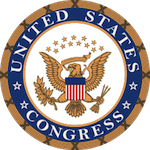 As part of the Lame Duck session, when Congress attempts to look busy while leadership negotiates or stalls negotiations of spending bills, it is time to pass commemorative coin legislation.
As part of the Lame Duck session, when Congress attempts to look busy while leadership negotiates or stalls negotiations of spending bills, it is time to pass commemorative coin legislation.
First up is H.R. 1830, the National Purple Heart Hall of Honor Commemorative Coin Act. The bill will create a gold, silver, and clad half-dollar program in 2021 to honor the National Purple Heart Hall of Honor in New Windsor, New York. The bill passed the Senate with an amendment allowing the U.S. Mint to strike the coin anywhere if the U.S. Mint cannot exclusively strike the coins at the West Point Mint. The House has to agree with the amendment before being sent to the president for his signature.
H.R. 1830: National Purple Heart Hall of Honor Commemorative Coin Act
The Senate found fewer issues with H.R. 4104, the Negro Leagues Baseball Centennial Commemorative Coin Act. The bill will create a gold, silver, and clad half-dollar program in 2022 to honor the Centennial of the Negro Leagues (2020) and raise funds for the Negro Leagues Baseball Museum in Kansas City, Missouri. The bill passed the Senate by unanimous consent and has been sent to the president for his signature.
H.R. 4104: Negro Leagues Baseball Centennial Commemorative Coin Act
A source reported that H.R. 7995, the Coin Metal Modification Authorization and Cost Savings Act of 2020 has growing interest in both chambers. H.R. 7995 brings up interesting questions regarding policies and what Congress is requesting. More on this another time.
Weekly World Numismatic News for November 29, 2020
 I forgot the comedian’s name who had about depicting the cost of things in old movies. He explained that in old western movies, a man would dismount from his horse, amble up to the bar for a drink and throw down a coin for the libation. It did not matter what the drink cost. The drinker paid one large silver coin with a loud ping.
I forgot the comedian’s name who had about depicting the cost of things in old movies. He explained that in old western movies, a man would dismount from his horse, amble up to the bar for a drink and throw down a coin for the libation. It did not matter what the drink cost. The drinker paid one large silver coin with a loud ping.
The silver dollar was the coin of the realm for the old west. It was hard money to go along with the hard times. Paper money had questionable value and could not be as trusted as a silver coin. Settling in the territories and building new lives on untamed land was risky and the feel of a metal coin was less risky than paper.
After the last Peace Dollar was struck in 1935, the U.S. Mint never minted another silver dollar for circulation again. The return of the large dollar coin came in 1971 with the copper-nickel Eisenhower Dollar. The coin was popular as a curiosity but waned until the bicentennial redesign. After the bicentennial, it seemed that the dollar coin had returned.
Then came the biggest failure of the modern coin era: Susan B. Anthony dollar.
Although the idea to honor suffragette Susan B. Anthony was sound, the rest of the coin’s design led to the long term rejection of dollar coins. The coin was smaller than the Eisenhower dollar but only slightly larger than a quarter. It was made using copper-nickel clad planchette and reeded edges that made it too similar to a quarter. Rather than being an 11- or 12-sided coin, it was round with a design that included a border to simulate the edges.
Many people tried to embrace the coin, but the confusion with the quarter was too costly. As college students, we abandoned the coin early. When the coin was spent as a quarter, we poor college students lost 75-cents per transaction or three cups of late-night coffee from the vending machine.
The introduction of the Sacagawea dollar in 1999 saw the basic planchet changed to fix all of the problems found in the Susie B. With the color change and the smooth edges, it was unlikely to be confused for another coin. Unfortunately, the Susie B. was such a failure that the coin has never gained traction in commerce.
The dollar coin programs of the 21st century have not been appreciated the way they should be. What better way to celebrate the republic’s longevity and the concept of the peaceful transfer of power than a celebration of the presidents? Since 2009, the coins celebrate the history of the Native American contributions with underappreciated designs.
Although some complain about a new series of coins, the American Innovation Dollar celebrates great inventions that have made life better. The coin is a better representation of the American spirit than a static design.
But there is no incentive to wean the country off of the paper dollar and embrace the coin. Even though Congress passed the laws to create these coins, they do not have the intestinal fortitude to eliminate the dollar note, as almost every first-world country has done. Instead, they pass laws creating coin series and wonder why they are not successful.
One of their alleged reason is that people do not want to change. But they are asking people who give specious reasons for resisting as “would you rather carry around 20 dollar coins or 20 $1 bills.” My response is, “neither. I would rather carry a $20 bill!”
It would be nice to join the civilized world and remove the $1 Federal Reserve Note from circulation. The coins have such exciting designs that they deserve circulation. Maybe someday the do-nothing Congress will figure it out–likely when its members’ average age dips below 60 years old!
And now the news…
 → Read more at lostcoastoutpost.com
→ Read more at lostcoastoutpost.com
 → Read more at nytimes.com
→ Read more at nytimes.com
 → Read more at worthingherald.co.uk
→ Read more at worthingherald.co.uk
 → Read more at wltx.com
→ Read more at wltx.com
 → Read more at newsweek.com
→ Read more at newsweek.com
Weekly World Numismatic News for November 22, 2020
 This news update is a warning that if you want coin shows and other events to continue, you better start taking COVID-19 more seriously.
This news update is a warning that if you want coin shows and other events to continue, you better start taking COVID-19 more seriously.
I do not care about your politics, who you voted for, or where you live. If you do not take the efforts to stop the spread seriously, there will be few shows in 2021 without relief until 2022.
Sure, vaccines are around the corner, but how long do you think it will take to deliver almost 660 million doses? Think about it: the U.S. Census estimates the population at the end of 2019 at 328.2 million people. If the pharmaceutical companies are saying every vaccine requires a booster within three weeks, that will require the manufacture, delivery, and administration of nearly 660 million doses of the vaccine. You have to wait on long lines to get tested, and that has covered less than 40% of the population.
If you think this is not real because some politician or pundit has said it to you, remember that they do not care about you. They care about their power, money, and an ego trip for the ability to make you do their bidding. The more they control you to do their bidding, the more they gain. They will gain. You will suffer.
Facts are facts. As I type this, the straight facts are that the Johns Hopkins University Coronavirus Resource Center confirms that 58,082,876 have been diagnosed with COVID-19 worldwide. There are 12,085,386 confirmed cases in the United States. That means the U.S. has 20.8% of the world’s coronavirus cases while only having 4.25% of the world’s population. Johns Hopkins is also reporting that there have been 255,823 COVID-19 deaths in the U.S., representing 18.5 percent of global deaths.
Only ONE country in the world has a faster infection rate, and only Sweden, who tried the herd immunity course of action, is having a faster death rate over the last three months than the U.S.
Why am I bringing this up in this forum? I want the shows back. I want to be able to go to Baltimore for the Whitman Show. I want to be able to go to the World’s Fair of Money. But at this rate, it is not going to happen.
The reality is that the National Money Show next March in Phoenix is likely going to be canceled. Arizona is a significant hot spot, and it will not get better before the ANA is forced to make a decision. And with the infection rate in the upper-midwest growing faster than anywhere else in the nation, I would not be surprised to see the World’s Fair of Money canceled or moved from Rosemont.
This week, I returned from the funeral of a second family member that died of COVID-19. One died early during the pandemic when our understanding of the virus was minimal. The most recent one was likely because of an infection at a place that should have known better.
The virus is real. It is not a hoax. It is not a government conspiracy. Nobody will use it against you, and it is not an infringement on any rights to require you to wear a mask for public safety. In fact, it is an infringement on my rights for putting me in danger. It is not a political statement. It’s only a mask!
And now the news…
 → Read more at seekingalpha.com
→ Read more at seekingalpha.com
 → Read more at fxstreet.com
→ Read more at fxstreet.com
 → Read more at indaily.com.au
→ Read more at indaily.com.au
 → Read more at thefirstnews.com
→ Read more at thefirstnews.com
 → Read more at cnn.com
→ Read more at cnn.com
 → Read more at businessinsider.com
→ Read more at businessinsider.com
2022 Commemorative Coin Programs Pass the Senate
Two commemorative coin bills introduced and passed in the House of Representatives were passed by the Senate this week. Both bills will create commemorative coin programs for 2022.
H.R. 1830: National Purple Heart Hall of Honor Commemorative Coin Act
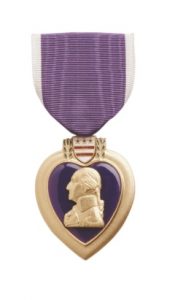
Purple Heart Medal (image courtesy of Stars and Stripes)
It would have been interesting to require this coin to be in the shape of a heart. The obverse design could be similar to that of the Purple Heart medal. The reverse could be about the Hall of Honor or the sacrifice made by those awarded the Purple Heart.
I will likely purchase this commemorative coin in honor of my grandfather, a recipient of the Purple Heart for injuries sustained in Europe during World War I.
H. R. 4104: Negro Leagues Baseball Centennial Commemorative Coin Act
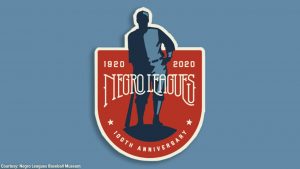
(From Twitter)
Although the law will not require these coins to be curved, there is an opportunity for judicious use of color and selective highlights, such as those used for the enhanced strikes.
Both bills will become law when signed by the president.
Now that Congress has begun its Lame Duck session stay tuned for more numismatic bills to pass by unanimous consent.

